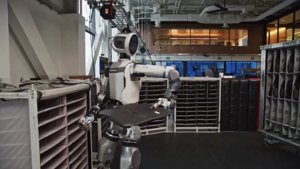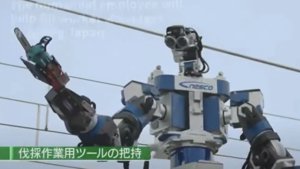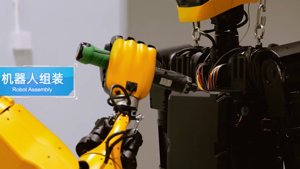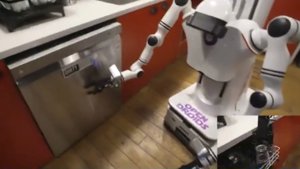In a world where humanoid robots typically command price tags that would make a London property developer blush, Booster Robotics has just thrown a rather hefty spanner in the works. The company has officially unveiled its K1 humanoid, an “entry-level embodied intelligence development platform,” for a starting price of a mere $4,999. And to introduce this mechanical marvel to the world? They had it busting out Michael Jackson’s iconic dance moves. This isn’t your typical multi-million dollar, DARPA-funded behemoth designed to conquer worlds or at least, a very expensive obstacle course; this is a bipedal robot priced for the masses—or, at the very least, for the bright sparks in university labs and R&D departments.
The burning question, of course, is whether a five-thousand-dollar robot can do anything more than moonwalk. Booster, it seems, firmly believes it can. The K1 isn’t being pitched as a finished product you can stick in your living room (yet), but rather as a blank canvas. It’s a robust hardware platform for innovators to build upon, aimed squarely at education, robotics competitions, and public demonstrations. This strategy sends a crystal-clear signal: the true value here isn’t just in the shiny metal and whirring servos, but in what developers can teach it to do.
Under the Hood of the K1
Right, let’s get down to brass tacks. The Booster K1 stands just shy of a metre tall (95 cm) and weighs a surprisingly manageable 19.5 kg. It’s been designed with portability in mind, capable of being tucked into a single suitcase and ready to roll straight out of the box. Within that rather compact frame are 22 degrees of freedom, granting it a respectable range of human-like motion for walking, balancing, and, as we’ve all now witnessed, getting its groove on.
The real headline act, however, is its brain. The K1 is powered by an NVIDIA Jetson Orin NX, delivering up to 117 TOPS of AI computing power. This isn’t just for dutifully replaying pre-programmed dance routines. Oh no. That’s enough computational grunt to tackle complex AI tasks like object recognition, interpreting voice commands, and diving into reinforcement learning—all processed right there on the device itself.
The sensor suite is precisely what you’d expect from a cutting-edge research platform:
- A 3D depth camera for perception and navigating its surroundings without bumping into things.
- A 9-axis IMU to keep it from, shall we say, performing an unscheduled face-plant.
- A microphone array for voice commands and pinpointing where that mysterious lab hum is coming from.
- Crucially, it supports ROS, Python, and C++, making it accessible to a vast ocean of developers.
With a battery life of roughly 50 to 80 minutes of walking time, it’s got enough juice for a solid lab session or to dominate a RoboCup match before needing a cuppa and a recharge.

More Than Just a Cheaper Bot
A sub-$5,000 price point is undeniably disruptive, a proper game-changer, but it’s merely one facet of a grander strategy for Booster Robotics. The company’s stated mission is to “unite developers to drive productivity evolution,” focusing its initial efforts squarely on scientific research and education. The K1, then, is the accessible entry point, a lighter, more agile version of their more robust T1 model. While the K1 might only boast half the joint power of its brawnier sibling, the T1, it proudly shares the same underlying design philosophy.
This philosophy champions resilience and openness. We’ve previously marvelled at how the industrial-grade Booster T1 is an absolute tank of a robot, refusing to stay down even after the most vigorous tumbles, as detailed in our earlier coverage Booster T1: The Robot That Refuses to Stay Down—Waking Up in 1 Second Flat (Or Less!) . That same indomitable spirit of crafting durable, developer-friendly platforms is clearly evident here. By furnishing a robust SDK and ensuring compatibility with simulation environments like Isaac Sim, Booster is effectively inviting the global robotics community to come and play in their sandbox. It’s a vision we heard echoed with resounding clarity at the Humanoids Summit in London, where the focus was unequivocally on cultivating an expansive ecosystem, not merely peddling a single piece of hardware ICRA 2025's High-Tech Extravaganza .
The Democratisation of Embodied AI
So, what does this all truly mean for the future of robotics? The K1 isn’t about to go head-to-head with Boston Dynamics’ Atlas anytime soon; it’s not engineered for heavy lifting or navigating the treacherous debris of a disaster zone. Instead, its profound impact will likely ripple through the hundreds, if not thousands, of university labs and burgeoning startups that were previously priced out of the fascinating, often frustrating, world of humanoid robotics research.
For far too long, progress in “embodied AI”—that wonderfully complex intelligence that learns and evolves through physical interaction with the tangible world—has been severely hampered by the astronomical cost of the necessary hardware. By drastically lowering this prohibitive barrier to entry, the K1 could accelerate research and development in an utterly transformative way. More students, more researchers, and even more intrepid hobbyists will suddenly have access to a physical platform to rigorously test their cutting-edge AI algorithms, inevitably sparking faster innovation in everything from fluid locomotion to nuanced human-robot interaction.
Of course, the K1 is a gamble, a bold throw of the dice. It’s a bet that a “good-enough” hardware platform, widely distributed and democratised among many, is ultimately more valuable than a “perfect” one kept in the exclusive hands of a privileged few. It’s a courageous move, but if it pays off, we might just see a whole lot more robots doing the moonwalk – and perhaps, just perhaps, pushing the very frontiers of artificial intelligence while they’re at it.






